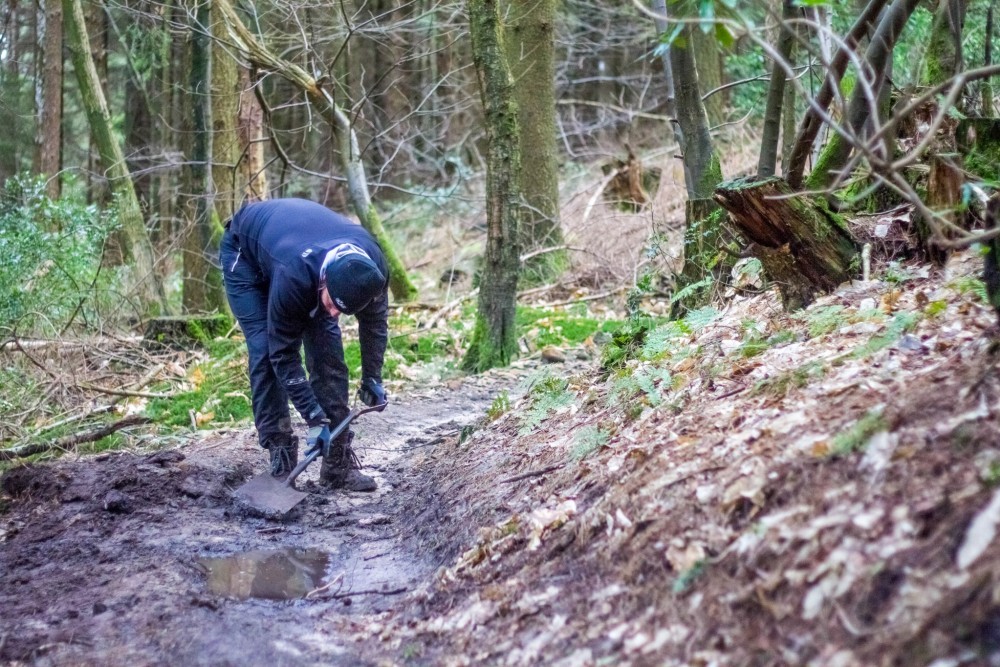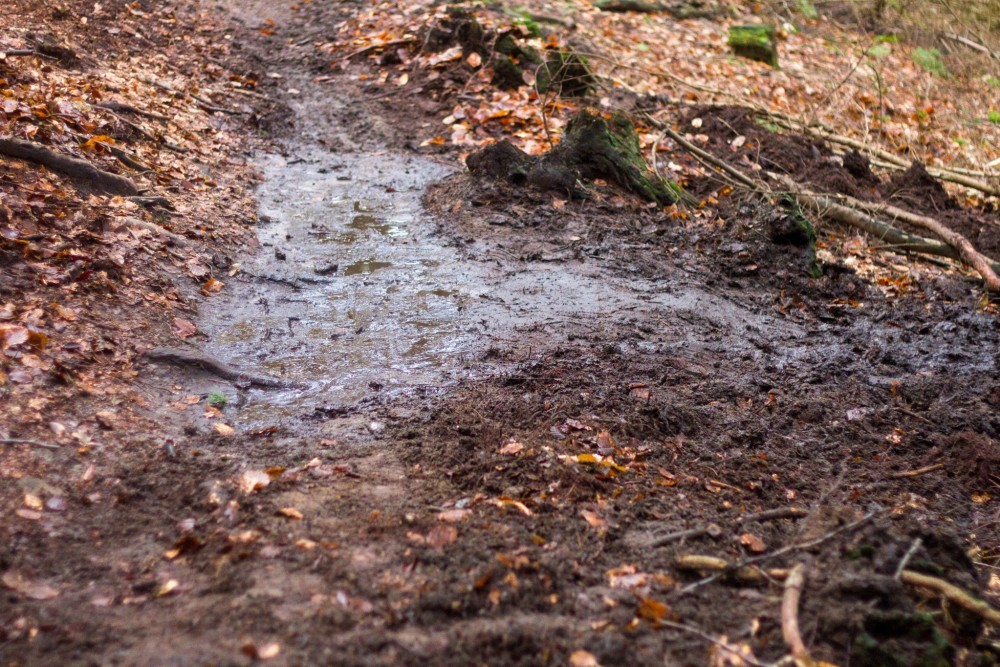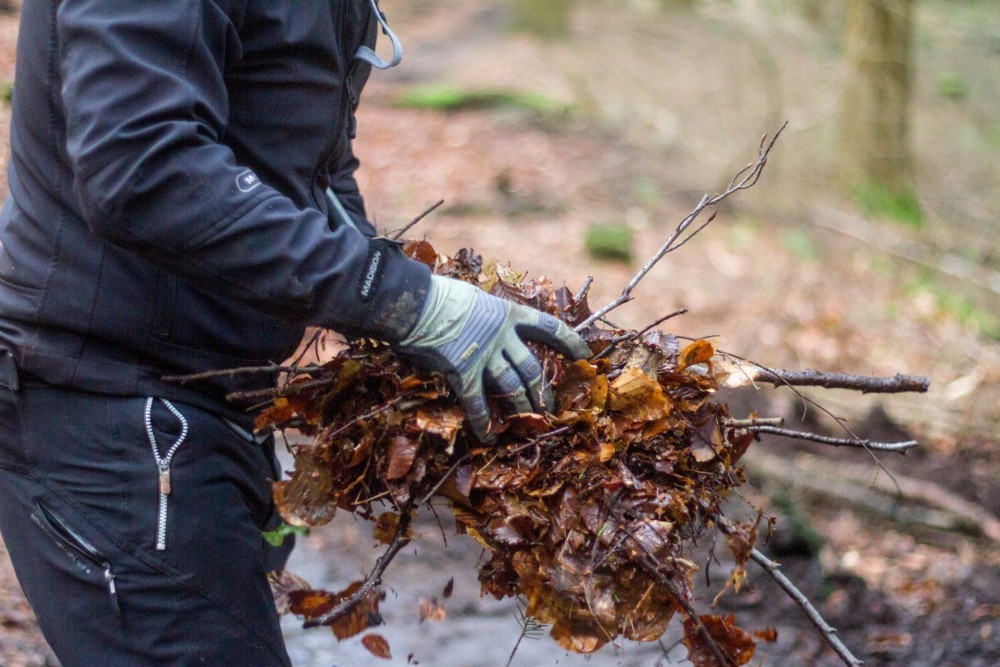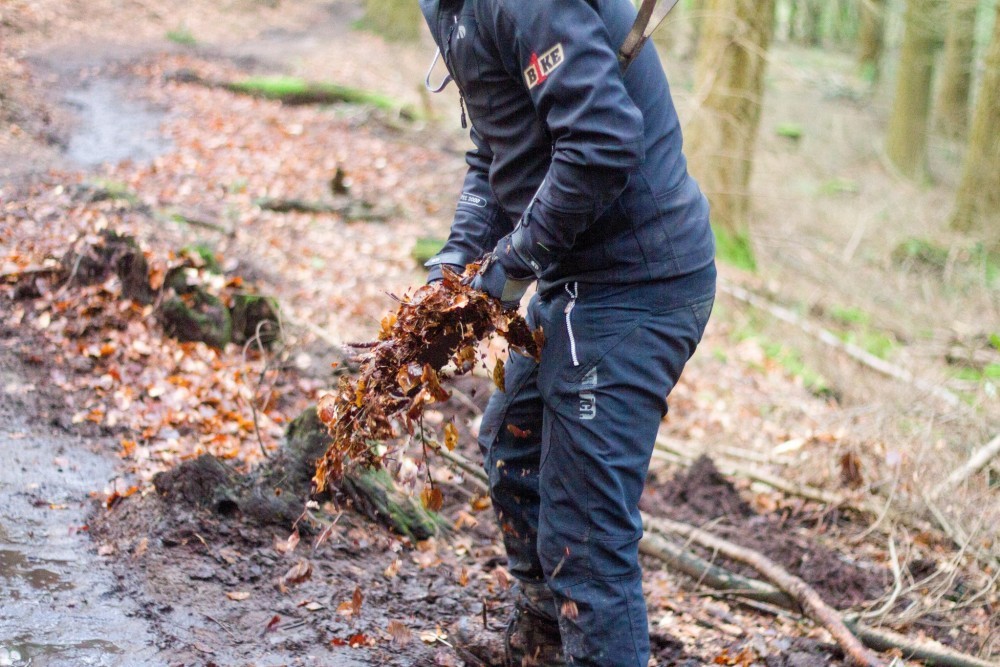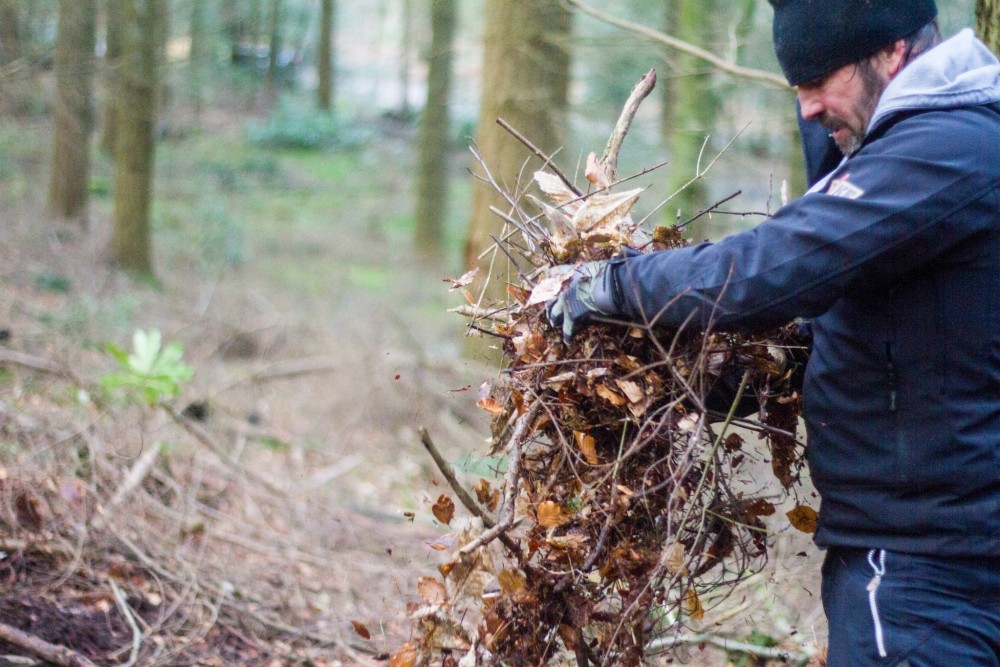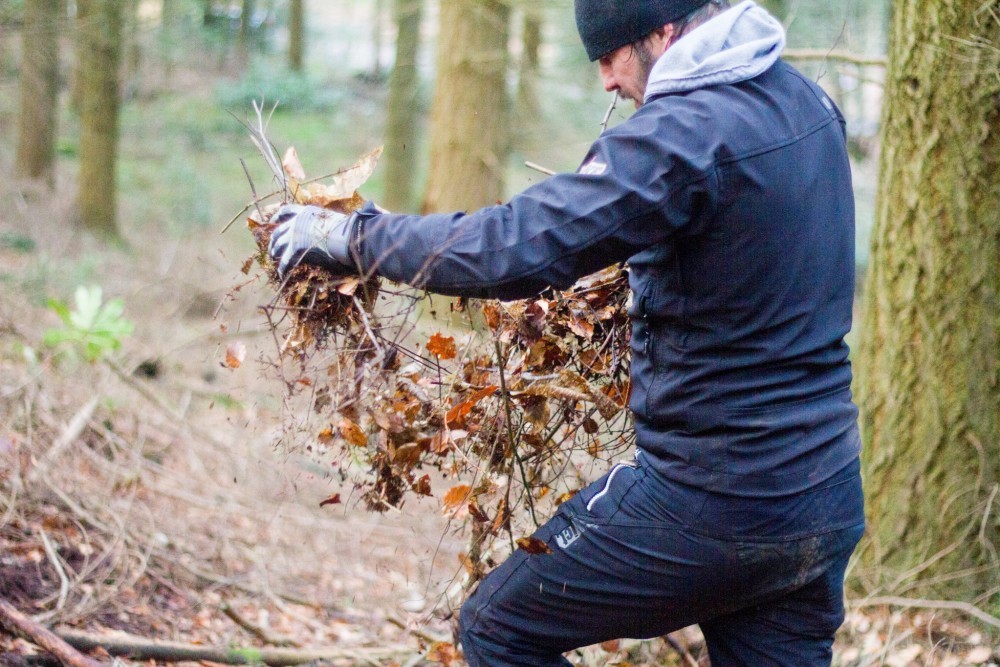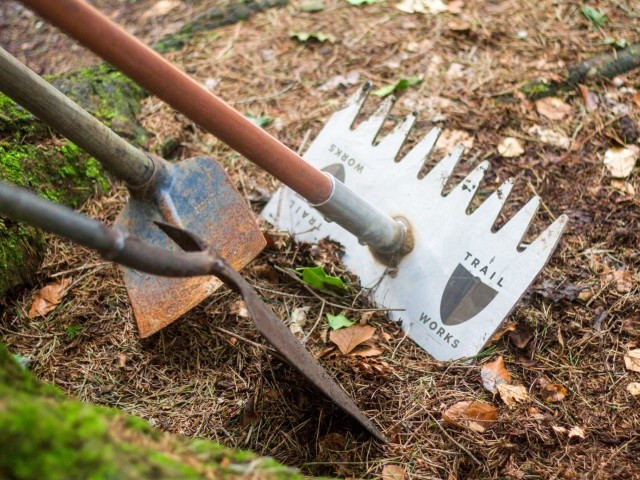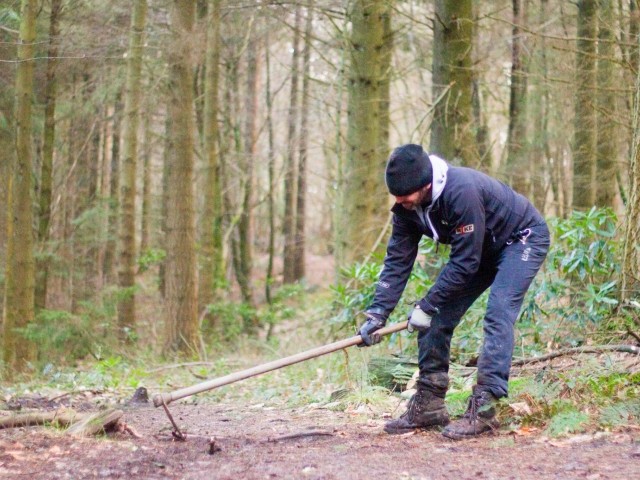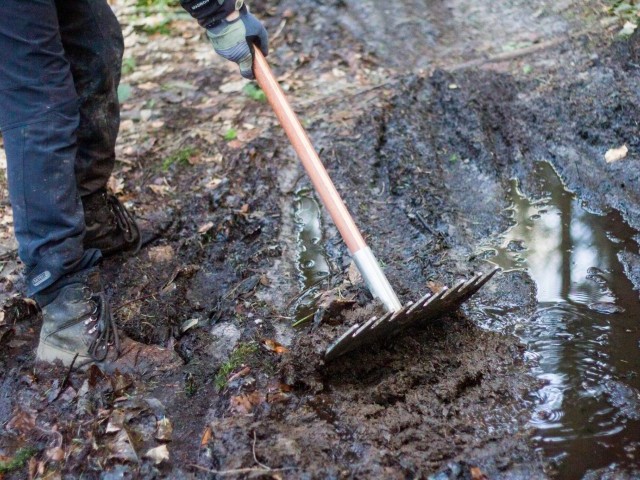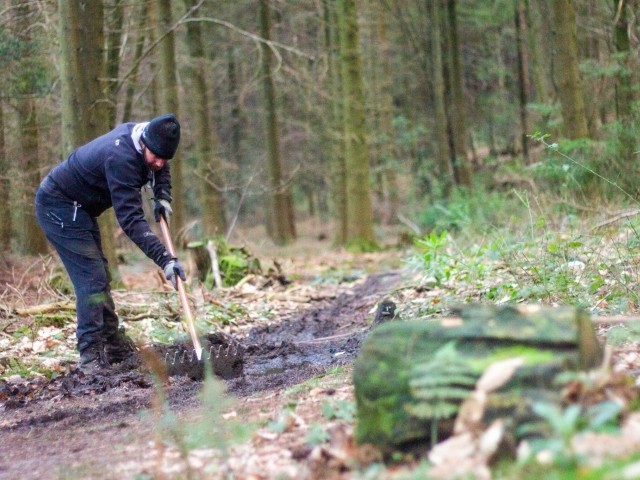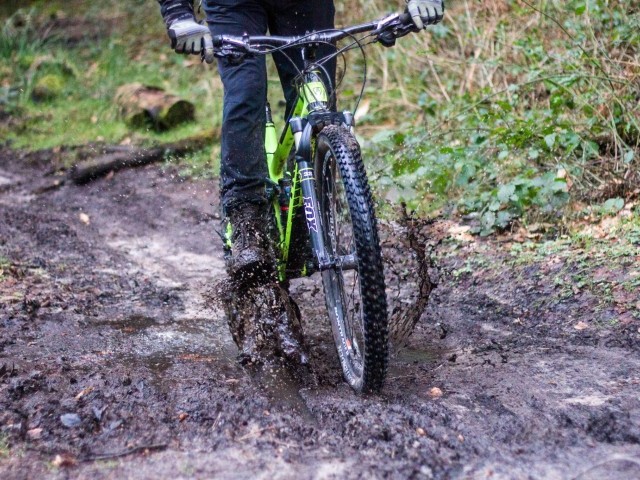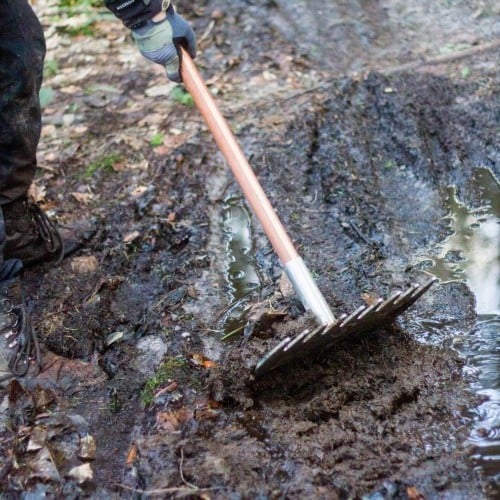
Trail Therapy
Technique / Trail Maintenance
Introduction
To the ear of those that don't ride it would be very easy to think that riders have something against the trails they ride. We talk of 'attacking them, smashing corners, nailing jumps' and generally 'ripping' or 'tearing it up’. We all claim to love the trails, yet from the way we speak it would seem as if the relationship is, in the most part, an abusive one.
The reality is of course very different, however there is no doubt that the weather matched with volume of use does have a detrimental effect on the trails themselves. All trails, no matter how they are constructed and no matter what the material they are made from, are subject to wear and tear. This is particularly true in the winter months when (for most) the prevailing moisture levels are higher and the ground beneath our wheels is more susceptible to damage. Left unchecked the creeping effects of use through the harsher weather can leave our trails a little bit more than just 'worse for wear'.
Since the sports early days riders have taken it upon themselves to deal with this, and dedicated bands of volunteers can be found out on the trails trying to tackle the erosion and keeping the trails running sweetly. Well organised groups of 'trail fairies or pixies' have sprung up around nearly all well ridden locations.
Operating with the landowners and/or manger’s consent, willing volunteer groups support the scene, mostly working in stealth mode, unseen and unnoticed by the majority of riders but carrying out the essential tasks that keep trails running a charm. These guys and gals are the true heroes of many a mountain bike community. The good news is that the skills set required to put a little love back are easily learned and can be applied by any rider armed with only the most limited of equipment. Whether acting alone or as part of an organised group, the return on even very minimal input can far outweigh the effort it takes.
If you are one of the growing number of riders keen to put something back, but don't know where to start or what tasks will reap the best return on investment, then read on… In fact, if you are already dedicating time to the care of the trail, also read on and make sure that your efforts reap the highest and most longstanding of rewards. By following a few simple rules you'll be sure that your spade time equates to smiles and the work that you do will be both long lasting and beneficial. Exuberance and energy can be wasted and actually lead to more harm than good if you forget some basics. Fortunately though you don't need to be a NASA employee to make a difference for the art of trail care is far from rocket science.
The videos deal with three of the most common trail fixes that you will need to address during the winter months or wetter times. Drainage, de-berming and dealing with desire lines/trail creep. You'll see from them that armed with just a humble spade and a little knowledge you can return a trail to its former glory in less time than it takes to prepare you and your bike for a winter ride. The specifics of the 'how to' in the videos should be underpinned by some general principles that, if followed, will mean your work has not only the desired effect, but adds value to MTB as a whole. The premise behind your work is to benefit the riding community not ostracise them.
1. Look to Join
Look to join a sanctioned trail build group-one that is well trained and working with the landowners approval rather than simply going 'guerrilla'. One of the most common errors is going alone armed with only enthusiasm and a barrow full of tools. If you are new to trail care working with others with experience, permissions and knowledge will ensure you learn fast and make a positive difference. That's not to say limit your activities to large scale dig days, far from it. The peace that can be found, quietly working away, surrounded by only mother nature has a therapeutic value of its own, BUT check in with whoever is officially responsible for maintenance, find out their priorities and where you will be best adding value to the MTB community and landowner relationship. It often has taken years to get landowner consent to maintain networks of legacy trails and keep them open. Unsanctioned, over zealous, wannabe trail builders can threaten these delicate relationships - they might think they are 'putting something back' but in reality the only thing they are putting back is the clock in terms of relations between the legitimate volunteers and landowners.
2. Tools of the Trade
It is true, a bad workman blames his tools...what is left unsaid is that a good workman (or woman) uses the right tools in a condition that is as far above that of simply 'fit for purpose' as is possible. If you are not a regular 'trail pixie' it’s easy to duck into your garden shed pull out a tool that was last utilised 'digging for victory' and head out to do your bit. The chances are that within 10 minutes you will have put an end to the useful life of that tool (which in reality passed decades before). Make sure shafts are solid...let me start again...! Check your tools over. Make sure that heads are secured to handles and handles are free from cracks, excessive ware...and of course pesky woodworm. As far as possible always try and use your tools for the task they where designed for. It is true that spades particularly can fulfil multiple roles (digging, compacting and cutting), but most tools are less versatile. If you are buying tools avoid the gardening section of your nearest pound-stretcher discount store and get something more of a 'trade’ or workman’s standard. Even when working alone it is important to understand safe working distances for any given tool. Thrashing a mattock about and coming into contact with anything other than the intended target can have serious ramifications.
3. Keep it Simple
If you perceive the solution to a particular problem to be elaborate and require anything more than the mineral soil the trail lies upon, it’s probably not the right one. Importing anything but material sourced within the immediate locality requires you to seek permission and understand potential environmental impacts. It may sound ridiculous, but I’ve seen people barrow in building hardcore, even a paving slab (seriously!), in a misguided attempt to repair a trail. Quite often the cause of trail disrepair is as simple as reduced fields of vision and obscured sight lines. Trimming back vegetation might be the cure that you are looking for rather than reshaping a berm or rerouting a section
4. Don't Go Organic
Using organic material is always a shortcut to avoid wherever possible. This is particularly true in the case of shoring up berms and jumps with logs from the forest floor. Using them as the foundations of any repair or build will sow a problem that will soon resurface and require remedial action. It may be true that trails across the world use wood to shore up sections and features, but this timber is rarely sourced from the forest floor. It's more likely seasoned, and treated and bought from a woodyard/builders merchant. Neither should logs be used to demarcate a trail edge - "showing Granny the way home" as IMBA Trail Essentials calls it - is a common mistake. Log lining trails forms a barrier for mulch to build up against, restricts the flow of water but is also a 'visual performance cue' that can distract the rider unnecessarily. Loam may be the material of choice for berms scratched in for a pro rider edit, but on high use sanctioned trails that will be ridden year round you want to lose the organic and use mineral soil that lies below. The only exception to this rule of thumb is when camouflagingyour work (a critical part of trail care as the videos show).
5. Stitch in Time
It is easy to wait until sections of a trail are so awful to ride that we would rather bypass it than ride it, before we even begin to entertain the idea of fixing it. Get in early and the problem can be fixed faster and require far less effort, less disruption and is less likely to reoccur. The sooner you deal with the issues at hand the less the symptoms will be in both severity and number.
6. Understand
Understand and deal with the cause not just the symptoms - Often trail repairs that are required are the symptom of a more fundamental problem. Fixing an issue that is a symptom will be short lived if the root cause of the problem is not also addressed, for example braking bumps may appear on a section of trail. It is important to fix this, but also to address the issue that is causing riders to brake suddenly, sharply or aggressively. Fixing the cause will stop a reoccurrence of the braking bumps. Adressing the braking bumps alone will improve the trail only in the short term. With all trail repairs it is important to decide if the damage is merely a symptom or the cause. If it is a symptom the cause should be identified and rectified. Of course, in some instances this is not always possible. In these cases regular review and inspection is required and the remedial action may need to be repeated more frequently. Some symptoms are easy to spot; trail creep, breaking bumps, surface degradation etc. Causes require more understanding and can be categorised into three main types:
- Construction issue - gradient, material, design. These may require more time and resources and be a bigger fix than you can carry out without a fuller understanding of trail design and construction.
- Environment or Extreme conditions - Prolonged adverse weather, natural causes (e.g. vegetation growth). These are likely to need to be repeated on a seasonable basis. Short of spraying the undergrowth will DDT and putting a roof over the forest (neither of which can be recommended) the seasonal cycle will require an ongoing plan of action to which there is no acceptable alternative.
- Rider Induced - Performance cue driven, rider volume, desire lines, unsanctioned trail building are all examples of rider induced issues. Barring rider volume related issues these are often (but not always) an easier fix and more permanently resolved, requiring less time and resources. However, understanding performance cues and rider psychology is essential.
7. Understanding 'Performance Cues' and Rider Psychology
Understanding why riders choose a particular desire line over the recognised trail and understanding the features, not just on the trail but within the trail corridor, will help you make the right decision in terms of what tactic to adopt in repairing and maintaining trails. There are many ways in which the work that is done to a trail (or left undone) can determine how a rider will respond. For example, riders instinctively ride a reasonable distance from hard edges. High vegetation on one side of the trail will mentally 'push' riders more towards or even off the line of a trail. When cutting a trail into a hillside leaving a vertical edge on the upper side of the trail will have the same affect. The in-slope should be just that. Grade in-batters or in-slopes and vegetation so that riders are more likely to stay on line and less likely to stray from it. Your repair and maintenance should contribute to a rider keeping the emotions in check, riding with more flow and not braking as sharply, as often or out of panic.
8. Keep Within Grade
Nearly all managed trails are graded in a similar manner to ski runs at a resort. If your 'repairs' mean a section of trail falls beyond its stated grade you either need to rethink your approach or regrade the whole trail. Building a 10 foot gap jump over a waterlogged section of blue trail might allow a small percentage of rides to bypass the problem, but it'll do little for the majority of riders that previously enjoyed that trail and have serious implications on the grade of the trail overall. De-berming may seem dull when there is an opportunity to fulfil your own riding ambitions by building a big jump, but repairs and maintenance need to be far more selfless than this.
9. Carrot Over Stick
Figuratively and, where the stick is concerned, actually. This is particularly true when dealing with desire lines and trail creep, but also relevant to many other repair and maintenance issues. It is easy to see the solution to 'trail creep' and 'desire lines' as blocking these lines with brash, branches and logs. There is a reason that that a rider strays from the trail and it is not always something they can control. Only sticking up a physical barrier without dealing with the issue that is causing them to digress won’t stop them straying, but will simply punish them unduly for doing so. Wherever possible, encouraging riders onto the right line by removing or reducing in frequency and severity the 'performance cues' that drove them off it should be the adopted solution. This could be encouraging water off the trail, opening up sight lines or dealing with some of the inputs by removing braking bumps or roots that are likely to catch a pedal(commonly referred to as hookers) or those that are flapping where the trail bed has eroded away below them (slappers).
10. See the Job Through
Identify what you can do in a single visit and finish the job. Some of the little finishing touches have the biggest impact in making sure your repairs stay in good order. Camouflaging the side of the trail where you may have been working will more likely keep riders on the restored original line rather than leaving your workings obvious. Blend the spoils of your labour back into the landscape rather than leave piles of debris trailside. Clearing mulch off the trail surface, but leaving a dam at the trail edge is an easy mistake to make. Remember part is close to part broken.
Getting involved in trail repair is deeply rewarding. As well as helping your trails run sweetly it will enable you to understand more about how terrain affects performance (and arguably this will make your own riding better). Added to which there is nothing more satisfying than overhearing riders discuss how well they just rode a section blissfully unaware of your part in that new found flow.
If you are expecting (or worse still, craving) the adulation of the riding community for your efforts then maybe volunteer trail building is not for you, but if you want to add value and improve the experience of all who ride the trails, get a warm feeling inside and less icy foot baths, then get involved.
If you have a project, cant find an organised group near to you, or want help training or advice, do feel free to get in touch with b1ke.com HQ. Bear with us when it comes to response times though...the wifi in the woods is limited and we may well be satisfying our trail care OCD.
This technique article was in Issue 40 of IMB.
By Richard Kelly
Richard Kelly has been riding bikes since forever, and teaching people to become better mountain bikers for over a decade. He’s always out in the Surrey Hills training riders, building trails and riding for himself whenever he gets the chance. His unique perspective on mountain bike technique has earned him fans the world over, with some speculating he is actually Jamiroquai or perhaps Jack Sparrow…






